
How to Use 5V 8Channel Relay: Examples, Pinouts, and Specs
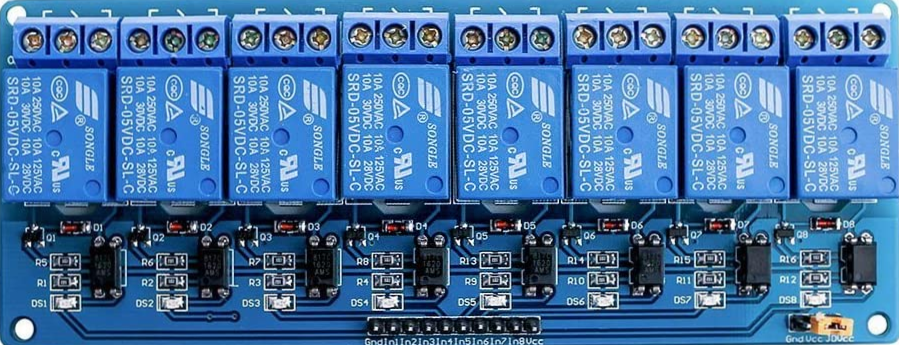
 Design with 5V 8Channel Relay in Cirkit Designer
Design with 5V 8Channel Relay in Cirkit DesignerIntroduction
The 5V 8-Channel Relay Module is an electronic device that enables control of multiple high-power circuits using low-power signals from a microcontroller like an Arduino. Each relay serves as an electrically operated switch that can be turned on or off to control devices such as motors, lights, and other appliances that require higher voltages and currents than a microcontroller can provide directly.
Explore Projects Built with 5V 8Channel Relay
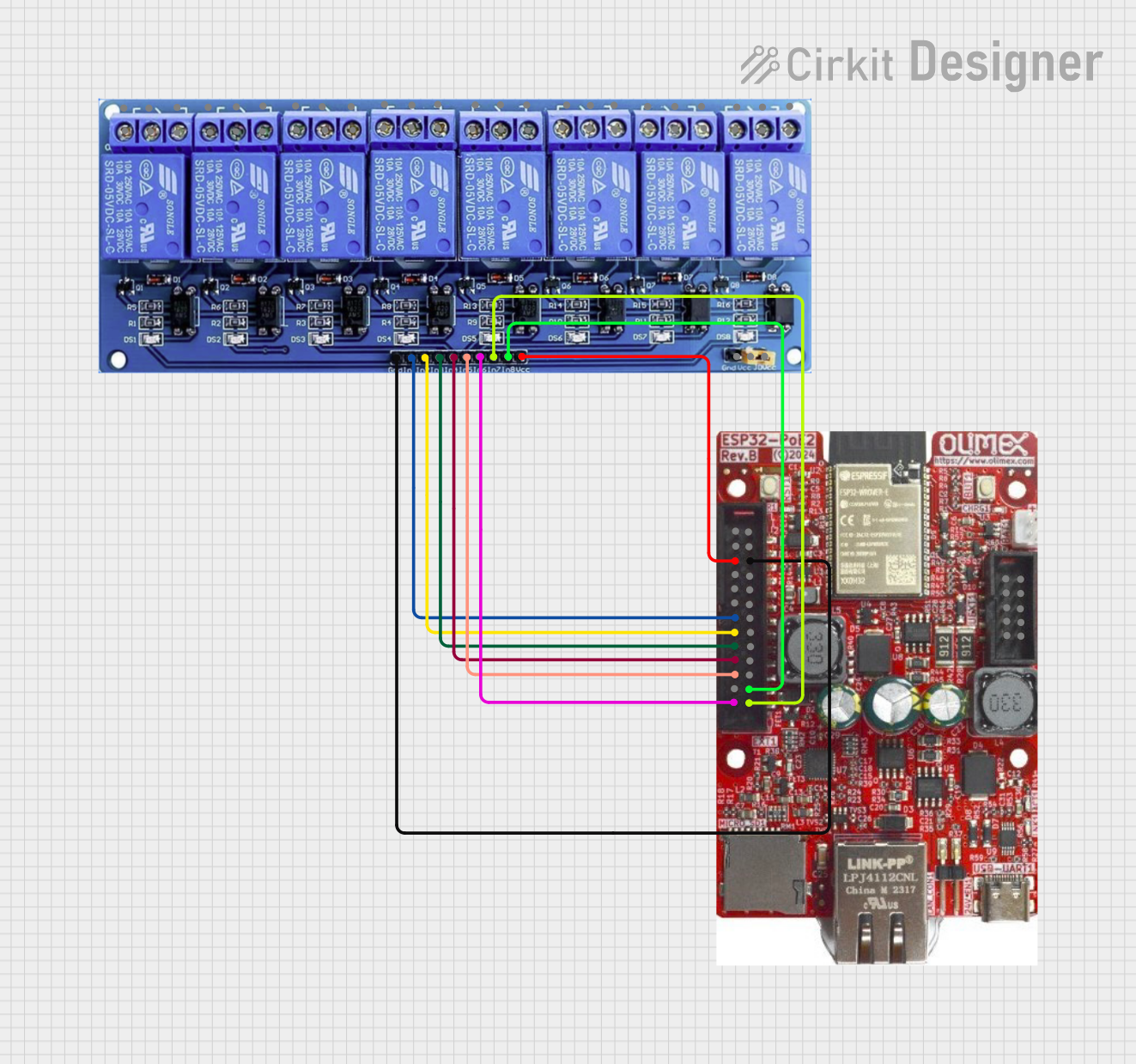
 Open Project in Cirkit Designer
Open Project in Cirkit Designer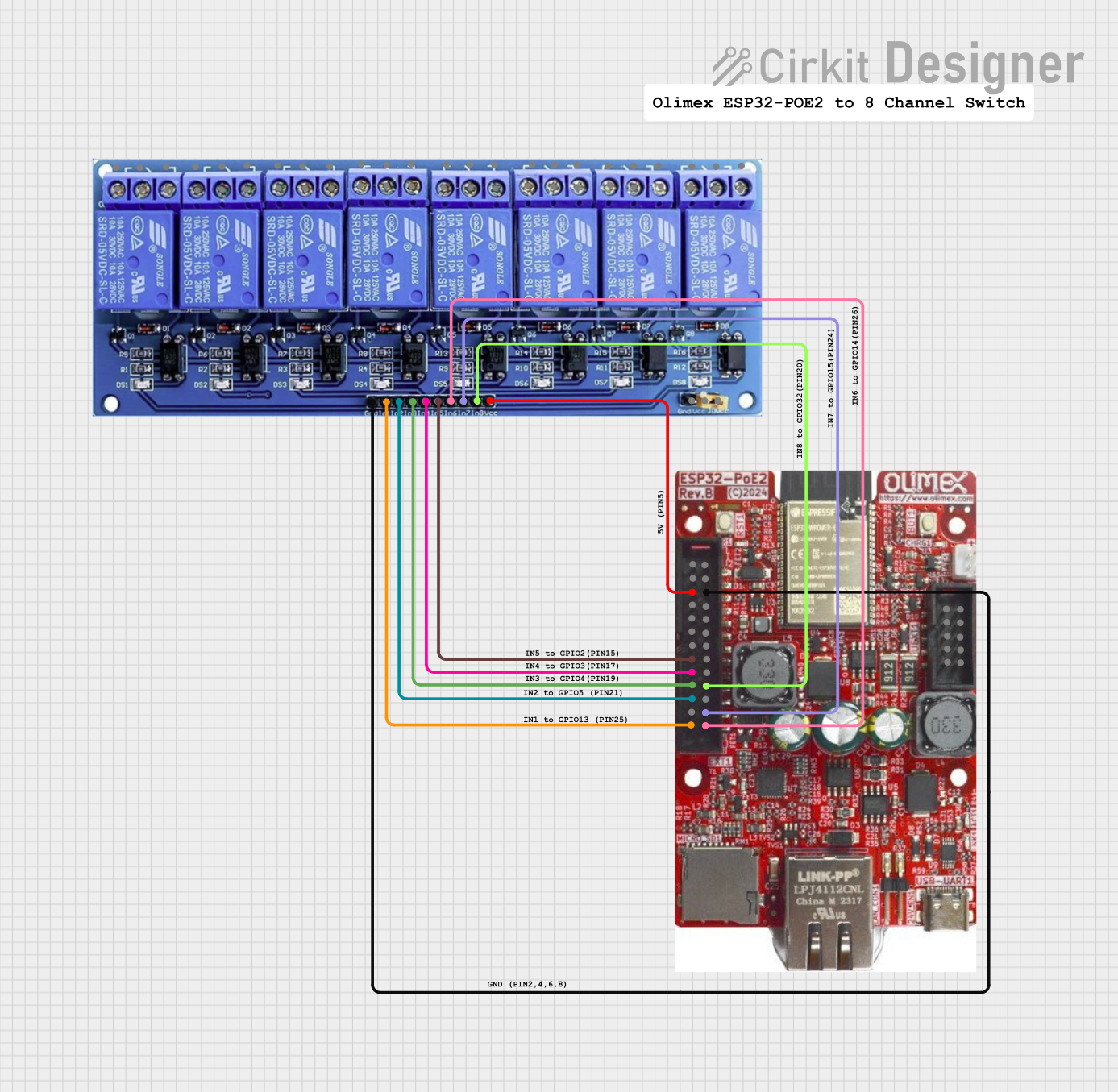
 Open Project in Cirkit Designer
Open Project in Cirkit Designer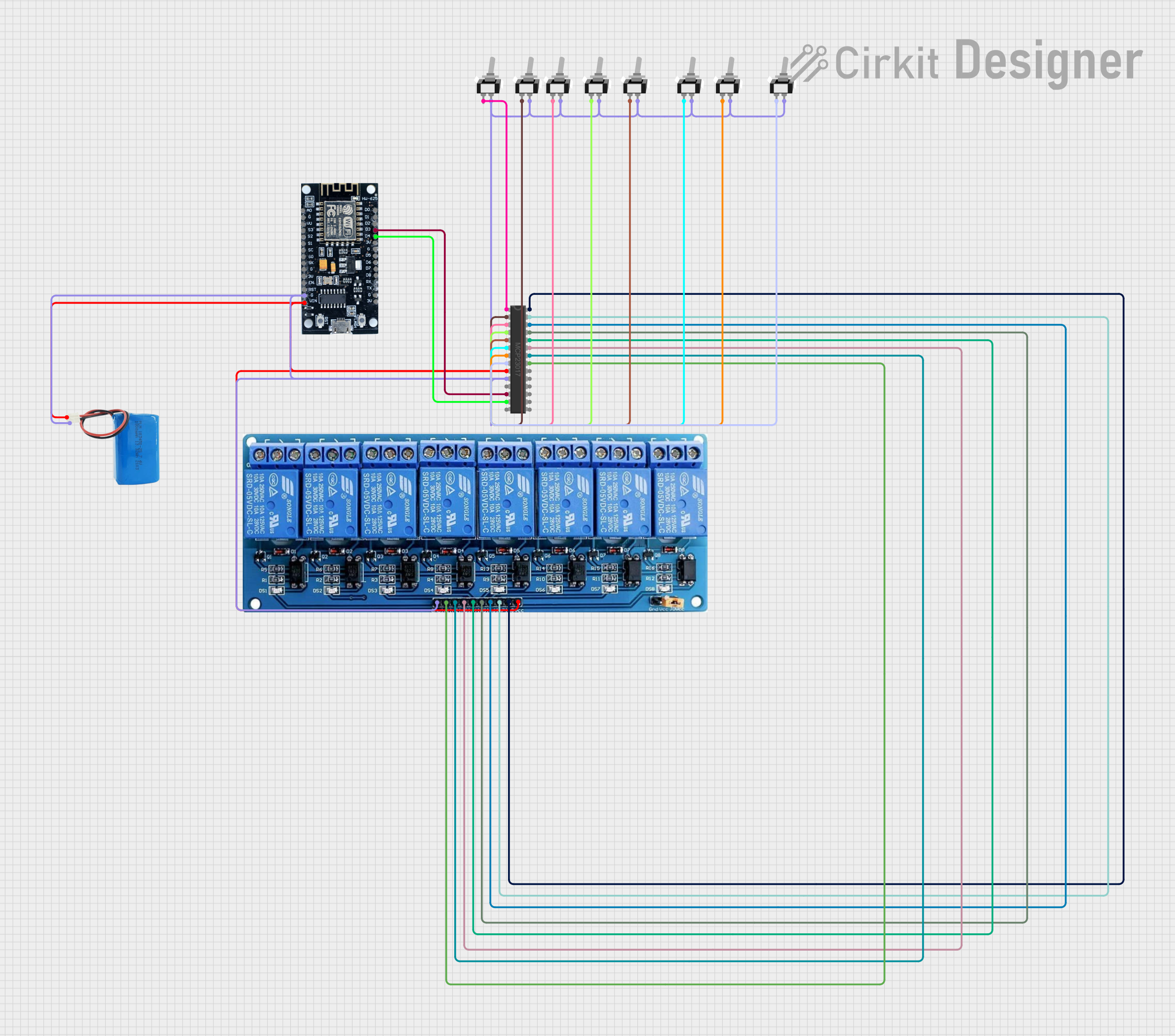
 Open Project in Cirkit Designer
Open Project in Cirkit Designer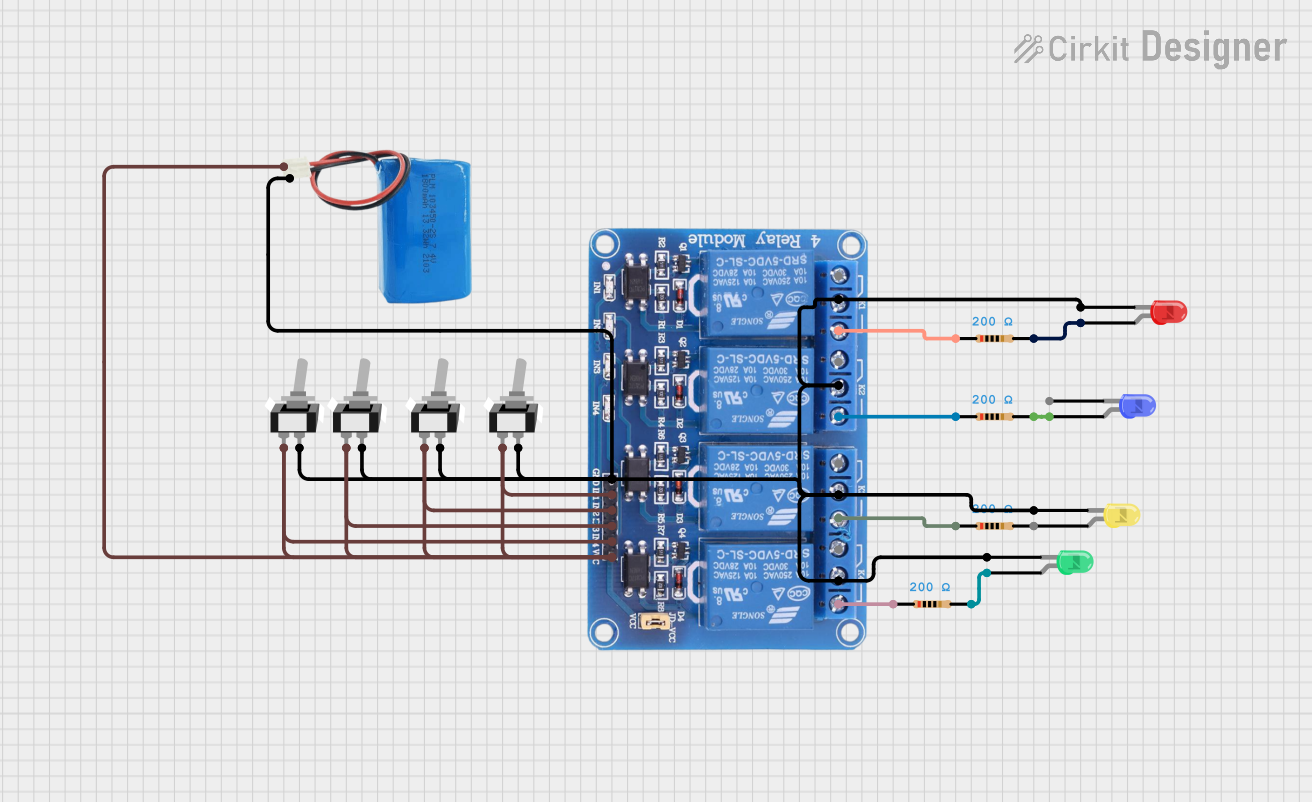
 Open Project in Cirkit Designer
Open Project in Cirkit DesignerExplore Projects Built with 5V 8Channel Relay

 Open Project in Cirkit Designer
Open Project in Cirkit Designer
 Open Project in Cirkit Designer
Open Project in Cirkit Designer
 Open Project in Cirkit Designer
Open Project in Cirkit Designer
 Open Project in Cirkit Designer
Open Project in Cirkit DesignerCommon Applications and Use Cases
- Home automation systems
- Industrial controls
- Robotics
- Power supply control
Technical Specifications
Key Technical Details
- Operating Voltage: 5V DC
- Relay Output: 250V AC up to 10A or 30V DC up to 10A per channel
- Control Signal: TTL level from 3.3V to 5V
- Indicator LEDs: LED for each relay's status
Pin Configuration and Descriptions
| Pin Number | Description | Type |
|---|---|---|
| 1 | IN1 | Input |
| 2 | IN2 | Input |
| 3 | IN3 | Input |
| 4 | IN4 | Input |
| 5 | IN5 | Input |
| 6 | IN6 | Input |
| 7 | IN7 | Input |
| 8 | IN8 | Input |
| 9 | GND | Ground |
| 10 | VCC | Power |
| 11 | JD-VCC | Relay Power |
Note: IN1 to IN8 are the control inputs for each relay. VCC is for the logic part, and JD-VCC is for the relay power. GND should be connected to the microcontroller ground.
Usage Instructions
How to Use the Component in a Circuit
Power Connections:
- Connect the JD-VCC pin to an external 5V power supply if available.
- Connect the VCC pin to the 5V output from the microcontroller.
- Connect the GND pin to the ground of the microcontroller.
Input Signal:
- Connect IN1 to IN8 to the digital output pins on the microcontroller.
Load Connections:
- Connect the high-power device to the Normally Open (NO) and Common (COM) terminals of the relay.
Important Considerations and Best Practices
- Ensure the power supply can handle the current required by all relays if activated simultaneously.
- Use flyback diodes across inductive loads to prevent back EMF damage.
- Avoid running high voltage wires close to low voltage control wires to prevent interference.
Example Code for Arduino UNO
// Define relay control pins
const int relayPins[] = {2, 3, 4, 5, 6, 7, 8, 9};
void setup() {
// Initialize all relay control pins as outputs
for (int i = 0; i < 8; i++) {
pinMode(relayPins[i], OUTPUT);
digitalWrite(relayPins[i], HIGH); // Relays are active LOW
}
}
void loop() {
// Example: Turn on each relay for 1 second, then off
for (int i = 0; i < 8; i++) {
digitalWrite(relayPins[i], LOW); // Activate relay
delay(1000); // Wait for 1 second
digitalWrite(relayPins[i], HIGH); // Deactivate relay
delay(1000); // Wait for 1 second
}
}
Troubleshooting and FAQs
Common Issues
- Relay not activating: Check the control signal voltage and connections.
- Intermittent operation: Ensure a stable power supply and check for loose connections.
- Noise issues: Use shielded cables for high voltage lines and keep them away from low voltage control lines.
Solutions and Tips for Troubleshooting
- Verify that the input signal is within the TTL level range.
- Check the power supply to the JD-VCC pin if using an external source.
- Ensure that the current draw of the connected devices does not exceed the relay rating.
FAQs
Q: Can I control the relays with a 3.3V signal? A: Yes, the control signal is TTL compatible and can be triggered with a 3.3V signal.
Q: Do I need to use all eight relays? A: No, you can use as many or as few relays as your application requires.
Q: Can I power the module using the 5V from the Arduino? A: Yes, for low current applications. However, for multiple or high-current relays, an external power supply is recommended.
Q: How do I know if a relay is on or off? A: Each relay has an indicator LED that lights up when the relay is activated (ON).
Q: Is it safe to control mains voltage with this relay module? A: While the relay can switch mains voltage, ensure you have proper knowledge of electrical safety and take necessary precautions. If unsure, consult a professional.